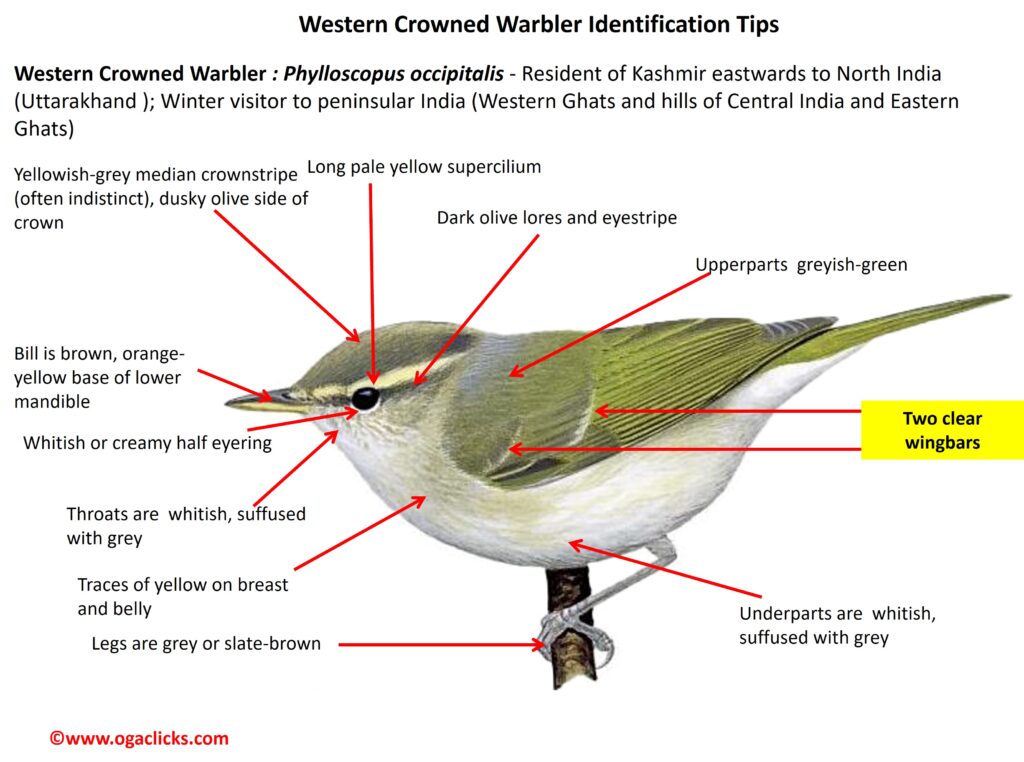
Western Crowned warbler Phylloscopus occipitalis
Etymology:
- Phylloscopus : Greek word phullon – leaf; skopos – seeker
- Occipitalis: Latin word for “ of the back of the head”
Distribution: Resident of Kashmir eastwards to North India (Uttarakhand); Winter visitor to peninsular India (Western Ghats and hills of Central India and Eastern Ghats)
Details : Size of 11–13 cm; wt. of 8–9 g. It is a medium-sized to large leaf-warbler with a long supercilium, double wingbar and indistinct crownstripe. It has yellowish-grey median crownstripe, dusky olive side of crown towards nape, nape is washed grey, it has a long pale yellow supercilium accentuated by dark olive lores and eyestripe. The upperparts are greyish-green, whitish tips of greater and median upperwing-coverts. The wingbar is most prominent on greater coverts, that on medians often indistinct, especially in worn plumage. The edges of flight-feathers and tail feathers are light olive-green, outer three tail feathers are narrowly edged white on inner webs. Its throat and underparts are mostly whitish, suffused with grey. The underwing-coverts are bright greenish-yellow. The iris is dark brown; bill is brown, lower mandible has orange-yellow base ; legs are grey or slate-brown. Both the sexes are alike. The juvenile is like adult but browner on upperparts, edges of flight-feathers are bright green, breast is washed with grey.
Habitat: It is found in breeding season in spruce and mixed conifer and deciduous forests. It is found between 1800 m and 3200 m. In non-breeding season in moist evergreen forests at lower levels, below 2100 m.
Food habits: It eats small arthropods, flies, bugs, small beetles, lacewings, spiders, also larvae. It is found alone or in pairs; in non-breeding season joins mixed-species flocks. It forages restlessly at all levels in trees and undergrowth. The food items are obtained mostly by gleaning and by making dashing aerial pursuits; continually flicks wings and tail and calls almost continuously while in pursuit of insect prey.
Breeding habits: They breed in May–Jul. They are single brooded and territorial. The nest is built by female. The nest is a ball comprising dry grasses, moss and animal hair, placed in hole in wall or in tree stump, or in old rodent hole or under stone or tree roots. They lay a clutch of 3–4 eggs. The incubation is done by female. The chicks are cared for and fed by both parents. The fledglings fed for at least one week after leaving nest. The nests are parasitized by Oriental Cuckoo and Lesser Cuckoo.